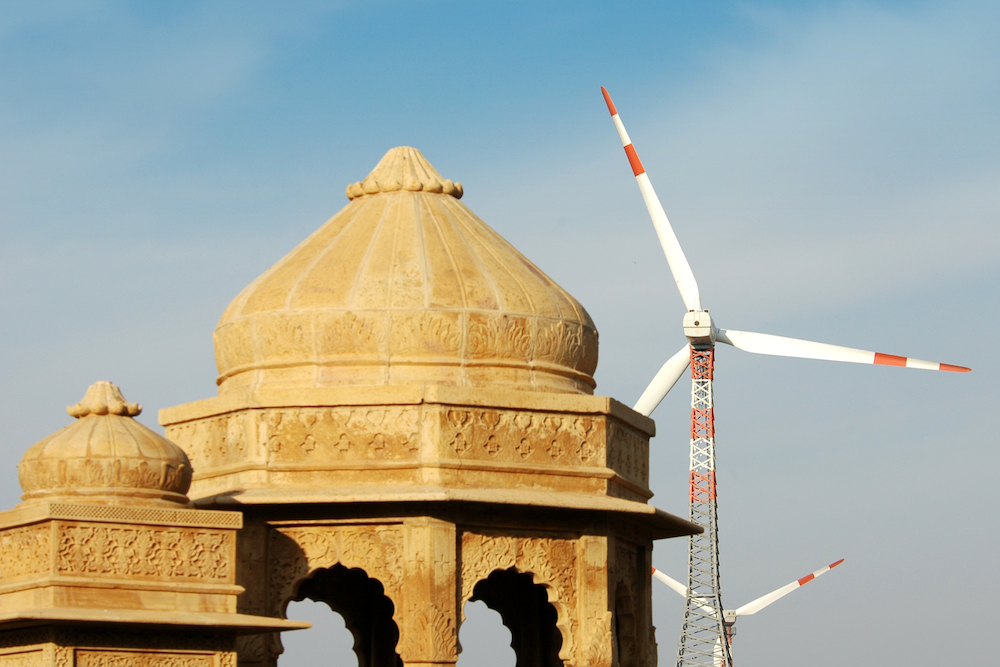- Indian corporations are increasingly shifting to renewable energy sources because they are often the cheapest power sources.
- India now the world’s second-largest market for corporate renewable purchasing power agreements after the U.S.
- Regulatory and policy changes will be needed if India’s corporate renewable energy sector is going to meet its potential.
Sustainability goals, consumer awareness and, especially, lower costs are spurring India to shift to using renewable energy.
India’s corporations are switching to clean energy sources, such as wind and solar, for more than altruistic reasons, according to speakers at the “Corporate Sourcing of Renewable Energy: India” webcast held by the Global Wind Energy Council on Thursday.
Corporate India has a potential of 5 gigawatts of renewable-energy demand by 2023, said Mayank Bansal, president, strategy and operations at ReNew Power, and panelists agreed there was room for expansion.
“Corporate sales for renewables is actually a very big opportunity,” said Bansal, adding that demand is driven by companies’ sustainability goals and the fact that competition among renewable energy providers creates “the cheapest electricity options for a lot of corporations. That is something that’s really likely to drive the corporate market.”
Infosys, Dalmia Cement, Mahindra Holidays & Resorts and Tata Motors are Indian companies that have pledged to use 100% renewable electricity by joining The Climate Group and CDP’s RE100 initiative, which includes another 40 companies that have an Indian presence.
India passed the U.K. and France to become the world’s fifth-largest economy in 2019, according to the IMF. Last year, India also became the second-biggest market for corporate renewable power purchase agreements (PPA), after the U.S. Karnataka, Andhra Pradesh and Telangana offered waivers to access charges through 2018, which led to a flurry of PPAs. Even after the end of the dispensations, India retained its global ranking in the PPA sector.
“India’s been a significant driver of corporate PPAs globally and we saw PPAs flourish through 2017-2018, largely driven by the waivers of the open access charges that were offered by key states,” said Paul Curnow, Baker McKenzie’s Asia Pacific Head of Renewable Energy.
COVID-19 caused a dramatic slowdown in economic activity in India, with the GDP projected to contract this year for the first time since the 1970s, World Bank and OECD data show. But a focus on renewable energy may help the country recover from the economic downturn, said Divya Sharma, executive director in India for The Climate Group.
“Renewables delivered more than two-thirds of India’s new generation capacity additions in the last fiscal year,” Sharma said. “Energy efficiency and renewable-energy investments are the best recovery tools and show it is possible to save and create millions of jobs while putting emissions into structural decline. India’s energy mix is already shifting towards renewables.”
A move to renewable energy will bolster India’s energy security, reduce pollution and reduce costs, the Institute of Energy Economics and Financial Analysts reported in February. The institute made 10 recommendations to accelerate renewable energy in India, led by improving the coordination of central and state governments, distributors and developers.
Many companies are “stymied, primarily because of policy and regulatory barriers that are restricting [renewable energy] uptake in the country,” said Bhavna Prasad, director of Sustainable Business at WWF-India. Barriers include “inconsistency in policy and regulation across states — because a lot of companies aren’t necessarily in one location, they are across different states, changing policies, regulations drastically impacting product liability, cross-subsidy surcharges, additional surcharges, transmission and wheeling charges.”
Curnow said that while large customers are able to buy power directly from generators, they can encounter high access charges to the grid, something that was previously waived. He added they can also find it hard to obtain access to the grid or run into distribution companies who sometimes try to renegotiate or cancel PPAs, though a bill introduced in April would address some of these problems.






















